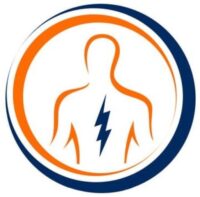Myositis ossificans is a skeletal muscle disease of unknown etiology, characterized by the formation of bone (calcification) and connective tissues within the muscles.
Myositis ossificans is very common after a traumatic injury including a fracture. After a fracture, there is hematoma (collection of blood) formation followed by fracture healing. By massaging the fracture site, there may be a misalignment of broken fragments and hematoma dislodges that might go between the muscles. Then the new bone mass will form between the muscles and so cause the deformity. This is called myositis ossificans.
TYPES OF MYOSITIS OSSIFICANS
It is presented in two forms: Circumscripts and Progressiva.
- Myositis ossificans cirumscripta (common): It is usually traumatic, but may be idiopathic in nature. The trauma is often to the muscles, fascia, tendon, and joint capsules.
- Myositis ossificans progressive (rare): It is a hereditary connective tissue disorder of unknown etiology. In this, the ossification occurs without injury.
CAUSES OF MYOSITIS OSSIFICANS
TRAUMA
Trauma has a definitive role in the causation of myositis ossificans. Injury to the muscles, ligaments, bones, tendons, and periosteum results in bleeding within the soft tissues which in turn may lead to myositis ossificans.
REPEATED TRAUMA
Repeated and constant damage to the soft tissues may lead to myositis ossificans.
DISLOCATION AND AVULSION INJURIES
These types of injuries are more prone to develop myositis than fractures because of the violent stripping of the periosteum and damage to the muscles.
III-ADVISED MASSAGE
This is the most common cause of myositis. Vigorous and improper massage particularly the elbow joint by quacks, etc. leads to myositis ossificans.
PATHOPHYSIOLOGY
- Trauma stimulates primitive stem cells in soft tissues to form osteoblasts.
- Organization of hematoma.
- Fibroblastic hypoplasia
- Osteoid formation
CLINICAL FEATURES
Early acute stages: Warmth, muscle spasm, loss of movement
Later stage: Firm lump which may be palpable
Final stage: Bony hard lump as well as total loss of movements
Areas commonly affected are-
- Elbow joints commonly in young athletes
- Ankle joint
- Knee
- Shoulder
- Hip
- Head injuries, it is more common
INVESTIGATION
Radiological features in the early acute stage: Fussy, ill-defined mass (cotton wool-like appearance)
Radiological features in the later mature stage: Dense, irregular radio-opaque mass
TREATMENT OF MYOSITIS OSSIFICANS
ACUTE STAGES
Conservative treatment is the method of choice and consists of the following:
- Immobilization of the part by the splint
- Non-steroidal anti-inflammatory drugs (NSAIDs)
- Physical therapy to maintain an active range of motion. (NO passive range of motion, they may stimulate ossification reaction and lead to recurrence)
- Manipulation should be done under anesthesia.
LATER STAGES
- Vigorous active ROM exercise using roller skates
- Gentle passive stretching
CHRONIC STAGES
Surgery is the treatment of choice and consists of soft tissue release and excision of the bony spur, which is well-formed.
POST-SURGERY PHYSIOTHERAPY MANAGEMENT (for elbow joint)
FIRST 2 WEEKS
- Elevation of hand to prevent edema
- Active exercises of the unaffected joints
- Isometric exercises to the elbow muscles
AFTER 2 WEEKS
- Thermotherapy will help to reduce pain and swelling
- Hydrotherapy
- Isometric exercises to the elbow muscles
- Mobilization of the elbow is done as follows:
- Gradual active flexion with sling suspension and maintaining the movement by adjusting the sling.
- Active assisted elbow flexion using roller skates
- Gravity eliminated elbow flexion using modified knee ratchets.
- Gravity-assisted elbow extension in prone lying.
- Self-assisted exercises for forearm supination and pronation by fixing the elbows on the sides of the trunk and placing the forearm on the thighs.
- Gentle passive stretching of the elbow using appropriate measures.
- After 3 weeks, all the above measures can be made more vigorous.
- The patient should regain full functional activity by the end of 6 weeks.
ALL THE BEST!
